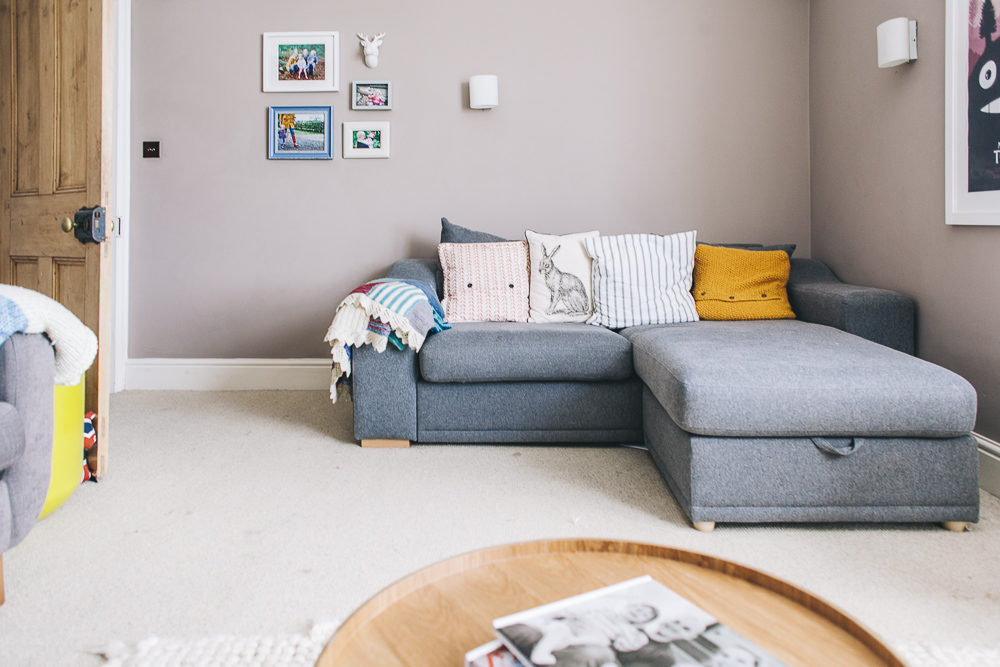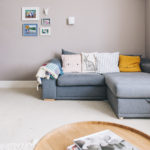
When it comes to being an expectant parent, there’s enough on your mind than having to think what you need to do to make your house baby-proof.
There’s more than one question that comes up, such as:
- What is a baby-proof house?
- Why would you want that?
- How do you make that work?
It’s not as simple as you might think or as easy as it should be to baby-proof your house.
The other thing to remember is that it’s easy to get overwhelmed, especially if you are first time parents.
What exactly is a baby-proof house?
There are dangers to having a baby in the house and they grow in number as the baby grows into a toddler.
The idea that you can baby-proof your house is a fairly modern one. It’s a way to alter and adjust things in your home design plans in order to make things as safe for the little one as possible.
Making those changes work in the most simple, effective and practical ways all comes down to knowing what you need and following through. That’s why a checklist (even one for each room) is a great way to safeguard your home.
Safety tips when you have a new-born
There are many choices that couples make in the journey to have a child. It could be anything from IVF treatment, the baby’s name to baby gender selection in some rare cases.
Whilst choosing gender of the baby is not legal in Australia and many other countries, one thing you can choose is to make sure that the baby will be as safe as possible BEFORE you bring them home for the first time.
This is when it is crucial to check that there are no hazards for your new born in their new home.
The most critical of all the things to consider is where they will sleep.
You need to make sure that the baby’s cot or crib is safe to use – especially if it is a hand-me-down or second hand one.
Any missing parts or damage needs to be identified and properly fixed or you should not use it.
Then comes the bedding and the hazards of suffocating. Make sure you remove any blankets, pillows and stuffed toys from the cot. There is ample government advice and SIDS guidelines to follow about how your baby should be sleeping. It is preferable to have them in an approved cot in the parent’s bedroom.
Do you need to baby-proof your home?
It’s not always possible to look out for every possible danger to a young child, but baby-proofing your home is a great idea for the baby and for you.
The last thing you need is the added worry that something could go wrong and your child suffers from an accident that in many cases could have been avoided.
That doesn’t mean wrapping everything in cotton wool and padding every part of the house. It means preparing your home to avoid common accidents.
Doing that preparation before the baby comes home is best because you are able to concentrate on what needs to be done now rather than when the baby has arrived. The issues of possible sleepless nights, tiredness, illness, breastfeeding and eating concerns, as well as postnatal depression and recovery from the birth.
Anything that gives you peace of mind in the first year of the baby’s life is to be welcomed.
Dangers as the baby grows
There are more things you need to do as far as baby-proofing measures go once the baby can stand or start to crawl. Whilst this is a crucial and joyful milestone, the baby is now ready to encounter more of the world.
This means anything from power sockets, cords and cables to what is stored inside any reachable cupboard.
Unless you have the means or need for an experienced nanny, you will be looking after your little one and need to be alert to their ongoing safety.
The dangers quickly add up, especially when you factor in all possible safety threats, such as:
- Furniture that can tip over
- The danger of a stove and the chance of being burnt
- Opening drawers and cupboards
- Sharp objects
- Sharp corners on furniture
- Cleaning liquids and other toxic chemicals
- Slipping on rugs
- Chocking on cords – electrical and those used on curtains and blinds
- Hinge guards for doors to protect finger jamming
A young baby can and often will put things in their mouth as a means of discovery. This can include unwanted objects such as hair clips and pins, loose change, even pens, pencils and other items lying around.

Different baby-proofing for different parts of the house
Having set areas where your baby and/or toddler can roam freely is especially important for their development.
One thing to remember is any steps or stairs.
This is a major cause of injury for both the baby and a parent.
Installing child-proof gates is a must for the little one and having handrails is crucial if you are using the stairs to carry the baby up and down.
Having the baby held tightly in one arm with the other firmly and securely on the handrail can prevent an injury in the event that you may slip or misstep.
Some rooms should be off-limits such as a seemingly innocent games room with table tennis or billiard ballswithin reach as well as other sharp, heavy or dangerous items.
Baby-proof is not style-proof
Some people fall into the trap of thinking a baby-proof home will be one that lacks any style, grace or flair. One of the most important things to remember is that even when you have children, you can still have nice things. You just have to teach your child to respect them.
Try not to fall into the trap of overthinking it all and seeing danger absolutely everywhere.
You’ve got enough on your plate with a baby coming to worry over every little thing.
You may not make everything in your home baby-proof and it’s important to remember that no new homedesign will always be 100% baby-proof.
Even if your home was scientifically tested to be completely safe for your baby, it wouldn’t be your home. It would probably look like a place without warmth, personality and charm. Surely those elements are what a baby really needs to feel safe in the love, warmth and affection of those who live in that home.









